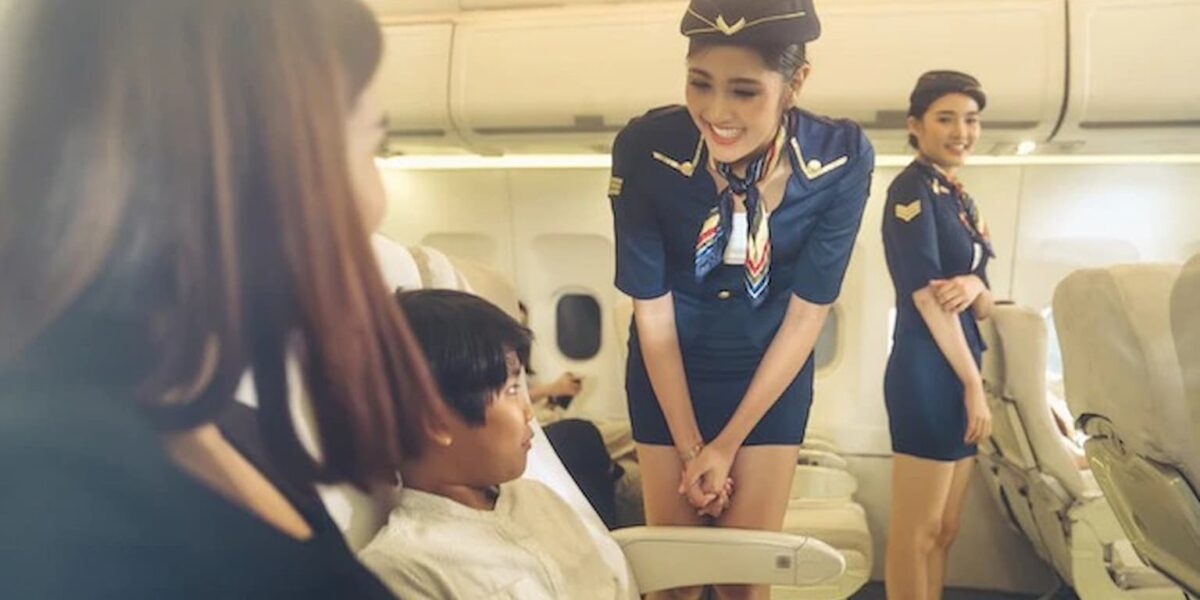
Ever wondered what it takes to become a cabin crew member? It's not just about looking sharp in a uniform or serving drinks at 30,000 feet. Cabin crew training is a rigorous process that prepares individuals for every possible scenario in the sky. From emergency evacuations to medical emergencies, these professionals are trained to handle it all. They learn about aircraft systems, safety procedures, and even how to deal with difficult passengers. Did you know that they also undergo extensive customer service training to ensure every passenger has a pleasant flight? In this post, we'll uncover 14 fascinating facts about the intense and comprehensive training that cabin crew members go through. Buckle up and get ready to be amazed!
Key Takeaways:
- Becoming a cabin crew member is tough! Airlines pick only the best from thousands of applicants and train them intensively in safety, customer service, and cultural awareness.
- Cabin crew members must stay fit, learn new skills, and keep improving. They undergo regular medical check-ups, language training, and career development to ensure top-notch performance.
Rigorous Selection Process
Becoming a cabin crew member isn't just about a friendly smile. Airlines have a stringent selection process to ensure only the best candidates make it through.
- Thousands of Applicants: Airlines receive thousands of applications for cabin crew positions, but only a small percentage are selected.
- Multiple Interviews: Candidates often go through several rounds of interviews, including group discussions, personal interviews, and role-playing scenarios.
- Height and Weight Requirements: Many airlines have specific height and weight requirements to ensure crew members can perform their duties effectively.
Intensive Training Programs
Once selected, the real challenge begins. Cabin crew training is intense and covers a wide range of topics.
- Safety Procedures: Trainees learn about emergency evacuations, fire fighting, and first aid to ensure passenger safety.
- Customer Service Skills: Excellent customer service is crucial. Trainees practice handling difficult passengers and providing top-notch service.
- Aircraft Familiarization: Crew members must know the ins and outs of the aircraft, including all safety equipment and emergency exits.
Physical and Mental Fitness
Cabin crew members need to be in top physical and mental shape to handle the demands of the job.
- Medical Examinations: Regular medical check-ups are mandatory to ensure crew members are fit to fly.
- Stress Management: Training includes techniques for managing stress and staying calm under pressure.
- Physical Fitness: Crew members often undergo physical fitness training to ensure they can handle the physical demands of the job.
Cultural Sensitivity and Language Skills
Flying internationally means interacting with passengers from diverse backgrounds. Cultural sensitivity and language skills are essential.
- Cultural Awareness Training: Trainees learn about different cultures and customs to provide respectful and effective service.
- Language Proficiency: Knowing multiple languages is a huge advantage. Many airlines require proficiency in at least one foreign language.
Continuous Learning and Development
The learning doesn't stop after initial training. Cabin crew members must continually update their skills and knowledge.
- Regular Refresher Courses: Crew members attend regular training sessions to stay updated on safety procedures and customer service techniques.
- Performance Reviews: Regular performance reviews help identify areas for improvement and ensure high standards are maintained.
- Career Development Opportunities: Airlines often provide opportunities for career advancement, such as training for senior cabin crew or management positions.
The Final Word on Cabin Crew Training
Cabin crew training isn't just about learning safety protocols. It's a comprehensive program that covers everything from emergency procedures to customer service. Trainees undergo rigorous physical and mental preparation to handle any situation that might arise during a flight. They also learn about cultural sensitivity and communication skills to ensure passengers feel comfortable and respected.
Understanding the depth of this training gives us a newfound appreciation for the hard work and dedication of flight attendants. Next time you fly, remember the extensive preparation that goes into making your journey safe and pleasant. Cabin crew members are more than just friendly faces; they're highly trained professionals ready to handle any challenge. So, next time you board a plane, give a nod to the crew—they've earned it.
Frequently Asked Questions
Was this page helpful?
Our commitment to delivering trustworthy and engaging content is at the heart of what we do. Each fact on our site is contributed by real users like you, bringing a wealth of diverse insights and information. To ensure the highest standards of accuracy and reliability, our dedicated editors meticulously review each submission. This process guarantees that the facts we share are not only fascinating but also credible. Trust in our commitment to quality and authenticity as you explore and learn with us.


